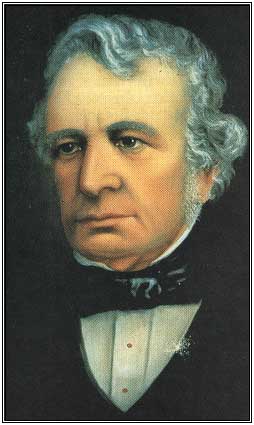George William Francis on:
[Wikipedia]
[Google]
[Amazon]
George William Francis (1800–9 August 1865) was an English 
Council of Heads of Australasian Herbaria Australian National Herbarium Biography, ''Francis, George William (1800-1865)''.
;Attribution
horticulturalist
Horticulture is the branch of agriculture that deals with the art, science, technology, and business of plant cultivation. It includes the cultivation of fruits, vegetables, nuts, seeds, herbs, sprouts, mushrooms, algae, flowers, seaweeds and no ...
and science writer
Science journalism conveys reporting about science to the public. The field typically involves interactions between scientists, journalists, and the public.
Origins
Modern science journalism dates back to '' Digdarshan'' (means showing the d ...
. He migrated to the colony of South Australia
South Australia (commonly abbreviated as SA) is a state in the southern central part of Australia. It covers some of the most arid parts of the country. With a total land area of , it is the fourth-largest of Australia's states and territories ...
in 1849 and became the first director of the Adelaide Botanic Garden
The Adelaide Botanic Garden is a public garden at the north-east corner of the Adelaide city centre, in the Adelaide Park Lands. It encompasses a fenced garden on North Terrace (between Lot Fourteen, the site of the old Royal Adelaide Hospital ...
in 1860.

Life
Born in London, Francis emigrated to Australia for improved prospects of supporting his family; he arrived in the ''Louisa Baillie'' on 2 September 1849. Shortly he took over the old botanical garden ofAdelaide
Adelaide ( ) is the capital city of South Australia, the state's largest city and the fifth-most populous city in Australia. "Adelaide" may refer to either Greater Adelaide (including the Adelaide Hills) or the Adelaide city centre. The dem ...
, north of the Torrens River
The River Torrens , (Karrawirra Parri / Karrawirraparri) is the most significant river of the Adelaide Plains. It was one of the main reasons for the siting of the city of Adelaide, capital of South Australia. It flows from its source in the ...
, as a tenant. He was then appointed director of the Adelaide Botanic Garden
The Adelaide Botanic Garden is a public garden at the north-east corner of the Adelaide city centre, in the Adelaide Park Lands. It encompasses a fenced garden on North Terrace (between Lot Fourteen, the site of the old Royal Adelaide Hospital ...
, a position he held for the rest of his life.
Francis died of dropsy
Edema, also spelled oedema, and also known as fluid retention, dropsy, hydropsy and swelling, is the build-up of fluid in the body's tissue. Most commonly, the legs or arms are affected. Symptoms may include skin which feels tight, the area ma ...
on 9 August 1865 and was buried the next day, leaving a widow and ten children.
Legacy
Francis established much of thegarden
A garden is a planned space, usually outdoors, set aside for the cultivation, display, and enjoyment of plants and other forms of nature. The single feature identifying even the wildest wild garden is ''control''. The garden can incorporate bot ...
and pagoda
A pagoda is an Asian tiered tower with multiple eaves common to Nepal, India, China, Japan, Korea, Myanmar, Vietnam, and other parts of Asia. Most pagodas were built to have a religious function, most often Buddhist but sometimes Taoist, ...
in the first botanical museum in Adelaide, the Adelaide Botanic Garden. ''Hakea francisiana
''Hakea francisiana'', commonly called the emu tree, grass-leaf hakea or bottlebrush hakea, is a shrub or tree of the genus '' Hakea'' native to Western Australia and South Australia.
Description
The non-lignotuberous shrub or tree with an ope ...
'', an Australian shrub that grows to , is named after him.
Works
Francis published: * ''Catalogue of British Plants and Ferns'', 1835; 5th edition, 1840. * ''Analysis of British Ferns'', 1837; 5th edition, 1855. * ''Little English Flora'', 1839. * ''Grammar of Botany'', 1840. * ''Chemical Experiments'', 1842, abridged by W. White, 1851, and republished as ''Chemistry for Students''. * ''Favourites of the Flower Garden'', 1844. * ''Manual of Practical Levelling for Railways and Canals'', 1846. * ''Art of Modelling Wax Flowers'', 1849. * ''Electrical Experiments'', 8th edition, 1855. * ''Dict. Practical Receipts'', new edition, 1857. * ''Acclimatisation of Animals and Plants'', Royal Society, South Australia, 1862. Francis also edited the first five volumes of the ''Magazine of Science and School of Arts'', 1840–5.Notes
Further reading
* *Council of Heads of Australasian Herbaria Australian National Herbarium Biography, ''Francis, George William (1800-1865)''.
;Attribution
External links
* {{DEFAULTSORT:Francis, George William 1800 births 1865 deaths 19th-century British botanists 19th-century Australian botanists English writers Australian writers